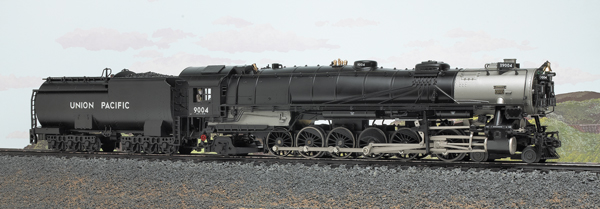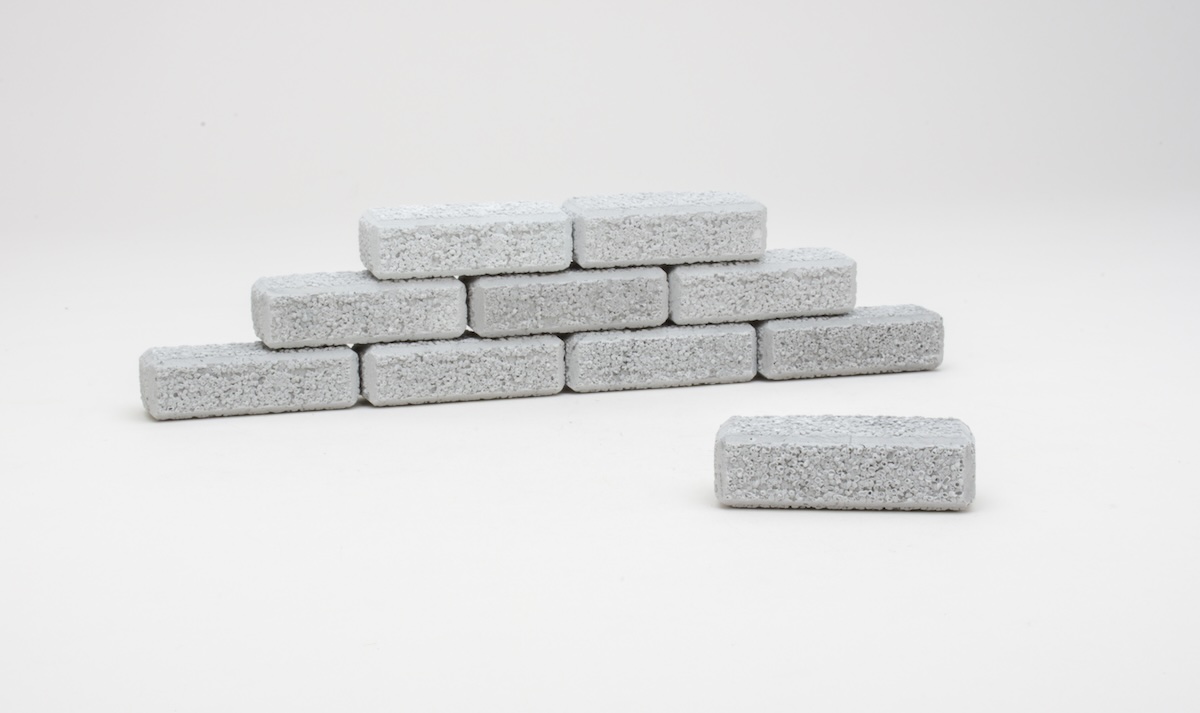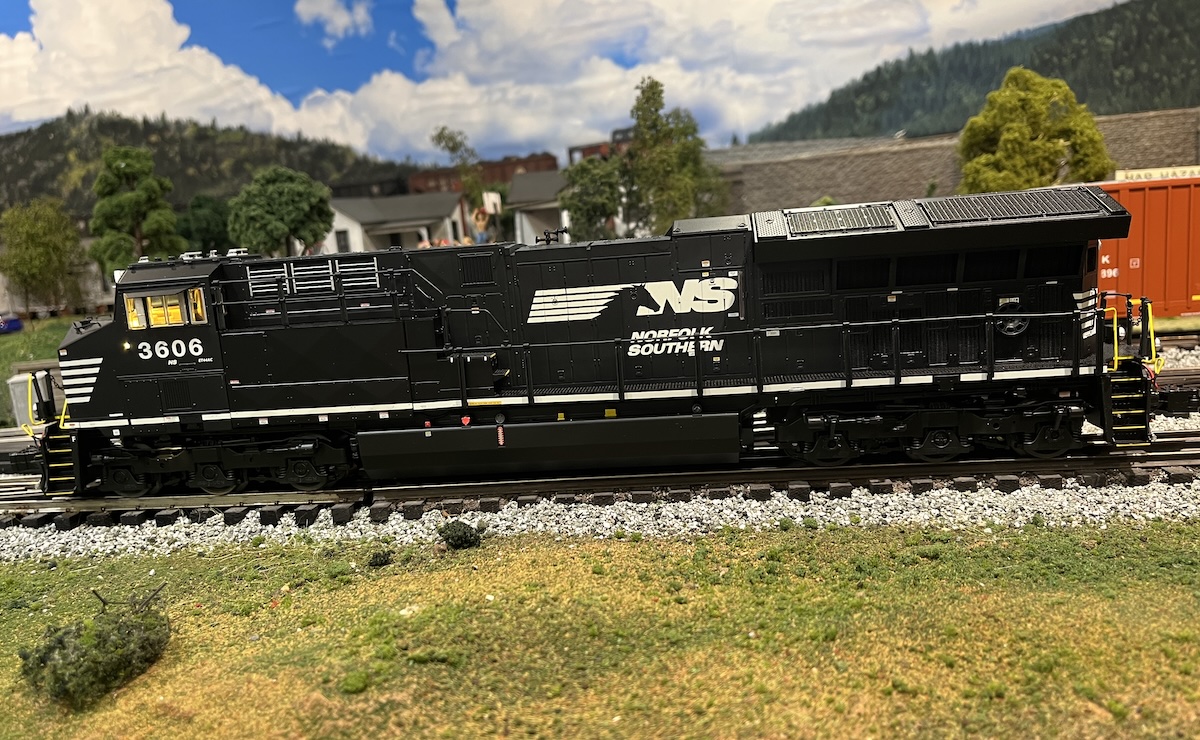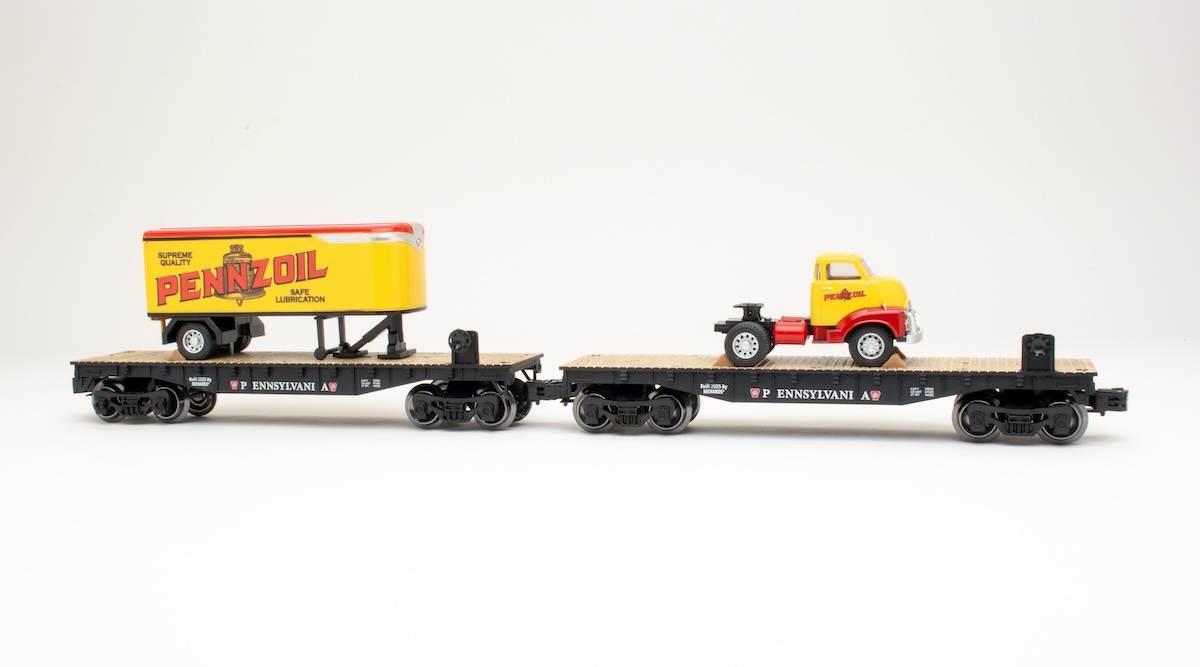Alco constructed 88 of the 782,000-pound giants for the Union Pacific between 1926 and 1930. They were originally assigned to operations from Cheyenne, Wyo., to Ogden, Utah and the Oregon Short Line. As dieselization advanced, some of the 4-12-2s were re-assigned to the Nebraska Division and some operated in the Kansas Division.
Operationally, the only major problem with the real 4-12-2s was the maintenance required by the third steam cylinder. That system used a conjugated valve gear invented by British railway designer Sir Nigel Gresley.
Unfortunately, that made the valve gear virtually impossible to access. Between 1934 and 1940, eight locomotives had their Gresley valve gear replaced with a double Walschaerts valve gear. Locomotives constructed after 1928 used roller bearings in the Gresley lever bearings.
The 4-12-2s were gradually retired between 1953 and 1956, and just one, the prototype, no. 9000, is on display at the Los Angeles County Fairplex (go to www.railgiants.com for more information on this museum and the no. 9000).
Lionel originally released this O gauge model in 2003 as a TrainMaster-equipped product. It was again cataloged in 2012, but this time packing the refinements of the Legacy command and sound systems.
Opening the box
This baby is about as majestic as it gets. It looks huge because it is. But right after the size of this beast, what stood out for me was the face. It is a delightful maze of compressors, handrails, steps, and rivet detail that I expected to see on locomotives from mountain railroads. You know, dragging coal trains over the Rockies.
And of course, the silver tones of the three cylinders as well as the hardware for the third cylinder (easily visible behind the front platform) stand out as top-notch “eye-candy” details.
The center of the smokebox has an access hatch with nice cast-in hinge, grab iron, and rivet or bolt detailing. Above the hatch is a headlight with three plates with the engine’s number. Above the headlight are two classification lights and a bell. Just above the bell and slightly behind are two number boards heralding this locomotive as Extra 9004.
The die-cast metal boiler is a wonderful canvas for all the shell detailing. Here is a tremendous amount of both cast-in and add-on detail, such as sand line piping, electrical and water drain lines. Some of those cast-in elements had me wondering if I could slip the tip of a fingernail beneath the detail, but I couldn’t.
For me, the most notable boiler item was the sand dome – each side has six lines draped down along the boiler. There are also several red-handled valves, a simulated turbine, pop-off valves, and a whistle decorating the top.
The handrails, which also serve as the radio antenna, are probably the longest I’ve seen this side of an articulated locomotive. Remember, handle with care!
Of course, the detail king is the wheel and running gear combination. When the locomotive is lumbering along the right-of-way, the movement of the rods and sliding gears creates a wonderfully animated scene that captures the eye.
The cab has two crewmen and a detailed backhead. The cab’s light is on when standing still and goes off when it is in motion. The cab exterior has both cast-in and add-on handrails and grab irons. Interestingly, there are grab irons running on both sides of the rear of the cab.
The locomotive has the traditional red firebox glow as well.
Just below the cab, the drawbar uses the infrared wireless tether.
The tender is a regular six-axle gem. It is a Vanderbilt-style rig with a square bunker for coal and a round water tank. The front of the tender has steps and handrails. The coal load is a chunk-type style.
Right behind the coal bunker are two marker lights. There are hand grabs that run low, along both sides of the top. These are for crew use in conjunction with the deck running on both sides of the upper portion of the sides.
On the rear there is a pair of steps running up to the topside running boards. The rear also has marker and backup lights and a grab iron running across the rear of the tank.
On top of the tank you’ll find decking with cast-in wood detailing and three water hatches.
The straightforward decoration of this model was good. Paint was applied evenly, and the lettering was clean and crisp.
Visually, this O gauge locomotive is great. I suspect that if Lionel were starting from scratch today, there would be a bit more add-on detailing (such as grab irons), but the model still says upper-tier. The addition of the Legacy system is where the real upgrade (and slight price reduction from the original) lay.
On the test track
This big steamer is as impressive on the track as it is on the shelf. Just firing it up fills the room with the mighty sound of steam locomotion, and when the model starts to move, you just want to say, “Wow!”
Running in my unusually deep basement causes sounds to get watered down a bit. The steam sound and especially the whistle are dynamite.
The model is impressive as it rolls toward you, with its headlight, class lights, and illuminated number boards heralding the approach of something special.
The light, sound, and motion of the 4-12-2 make it quite a treat.
Our conventional-mode low-speed average was 7.8 scale miles per hour, and the command-mode low-speed average was 6.6 scale miles per hour. Our high-speed average was 80.8 scale mph.
Drawbar pull for the ginormous locomotive was an impressive 3 pounds, 1 ounce.
The O gauge 4-12-2 by Lionel is a worthy addition to its line of scale-sized and detailed UP Big Boys, Challengers, and Northerns, especially since it is packing the Legacy system. If your railroad hears the call of the wide-open prairies, get down to your Lionel retailer and check this model out!
Features: O-72 operation, can-style motor, Legacy command and sound systems, speed control, wireless tether. For more information go to www.lionel.com















I purchased the original 4-12-2 a few years back, which was no 6-38029. A beautiful engine with great pulling power, amazing details and as mention, more confortable on 90 radius. As usual, great production from Lionel.
Georges Cheff, Ottawa, Canada